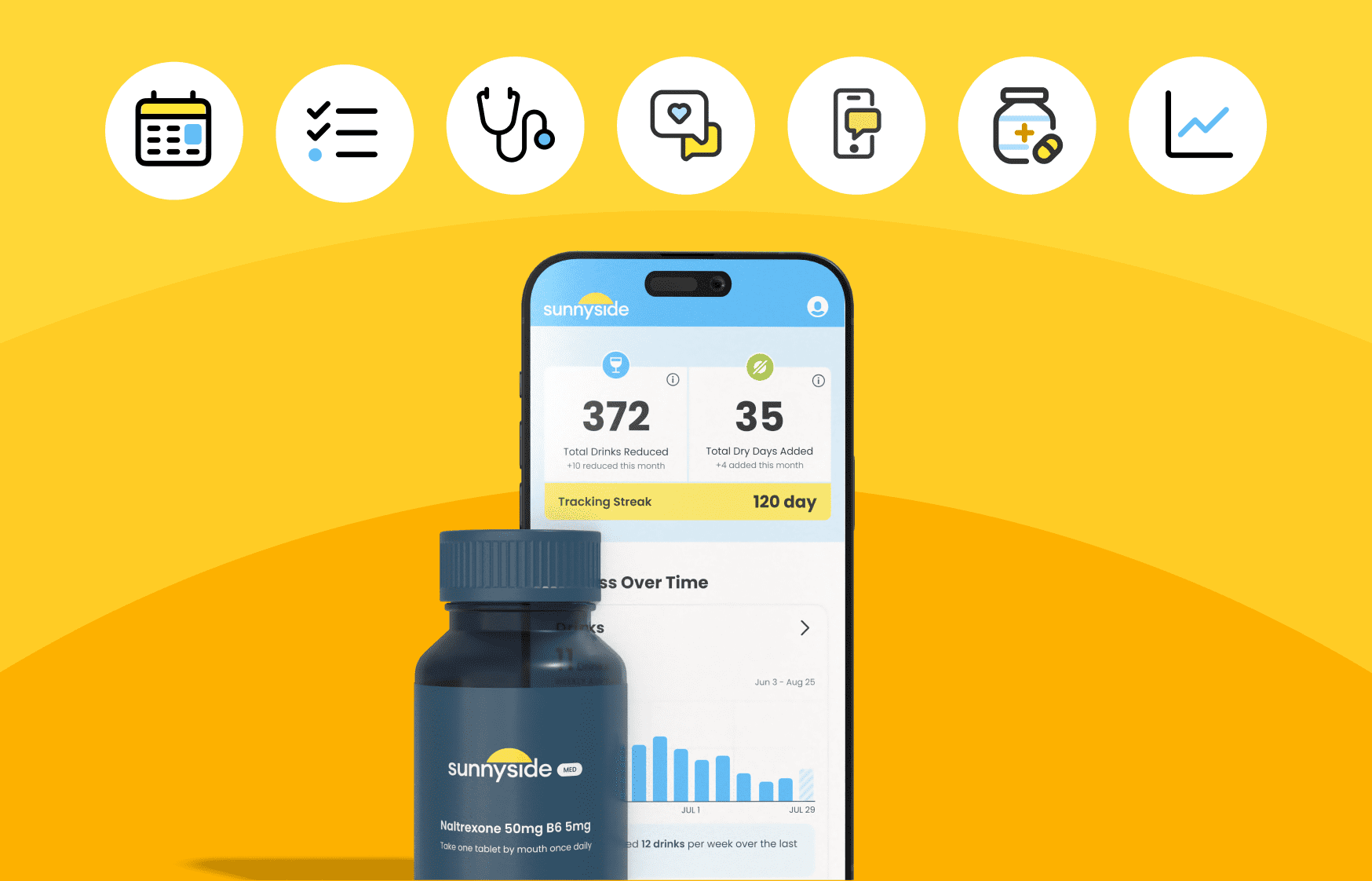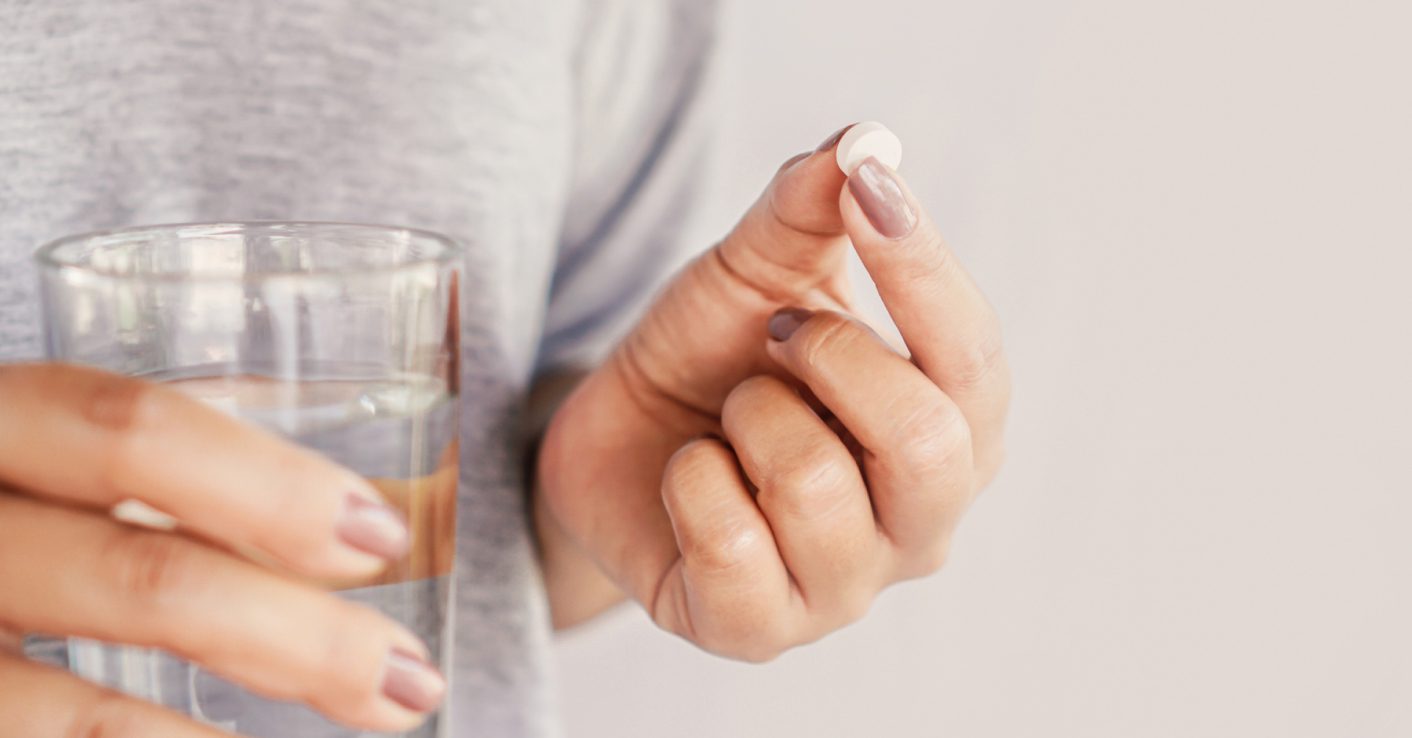“Alcohol can make life more enjoyable. But alcohol isn’t essential to enjoying life.” If these 2 statements apply to you, there’s a good chance you have the mindset of a moderate drinker.
In practice, the moderation mindset looks like this: The moment alcohol starts to have a negative impact on your health or relationships, you’re able to cut back. But this is often easier said than done.
In this article, we’ll take a deep dive into what moderate drinking looks like — and offer tips on how to keep it from morphing into something more harmful.
What is Moderate Drinking?
The CDC defines moderate drinking as “no more than one drink per day for women and no more than two drinks per day for men.” A drink in their book is “12 oz regular beer, 5 oz wine, or 1.5 oz 80-proof distilled spirits.” [1]
These daily benchmarks add up to 7 weekly drinks for women and 14 for men.
If you wait until Friday night to enjoy that number of drinks, you’re not a moderate drinker. That’s binge drinking, which can cause serious health issues.
Think you might be a binge drinker? Read this guide to learn more and take back control.
Are You a Moderate Drinker?
Moderate drinking can easily morph into riskier levels of alcohol consumption. But if you have these characteristics, you’re likely in the safe zone.
1. Your alcohol consumption doesn’t exceed CDC benchmarks.
Sure, if you drink fewer than 7 weekly drinks for women or 14 for men, the CDC considers you a moderate drinker.
The reality is 7 or 14 weekly drinks might still be too many for some people. Say you start seeing cracks in your performance at work or increased fatigue after 5 weekly drinks. Moderation means something different for you.
We’re not saying that “moderate drinking” is totally subjective. If you regularly exceed CDC guidelines, you might develop alcohol tolerance. You’ll gradually need more alcohol to get the desired effect. Alcohol dependence might result, and you’ll find it much more difficult to cut back.
2. Alcohol doesn’t interfere with your wellness goals.
Wellness depends on good physical and psychological health. Moderate drinking shouldn’t interfere with either side of the wellness equation. Here’s what this looks like in practice:
- You don’t regularly miss your daily workout because of drinking the night before.
- You might occasionally drink to unwind after a bad day at work. But you don’t drink to the point that you start feeling depressed more often.
When you put your physical and mental health first, you won’t depend on alcohol to “feel better.” You’ll be in a better position to maintain moderation.
3. You can resist peer pressure to have that extra drink.
In 2022 we surveyed 500 Sunnyside members and learned almost 5% of them call “social pressure” a drinking trigger.
If you’re a moderate drinker, you’re able to enjoy alcohol socially without losing sight of other drinks you’ve had or plan to have that week.
You might plan to have 2 drinks on a night out with friends but be tempted to have more. You stick to 2 because you know that 3 or more will affect how you feel the next day.
Here’s some useful tips on communicating your drinking choices to friends.
4. You’re able to maintain a target weight.
Alcohol calories vary by your choice of drink. Some of the worst caloric offenders include flavored beers like chocolate stout (250-350 calories) and cocktails like espresso martinis (320-340 calories). The more of these you drink, the more weight fluctuations you’ll experience.
“Experimental evidence” from the scientific community suggests “moderate intake of alcohol does not lead to weight gain over short follow-up periods.” Heavy drinking, on the other hand, “is more consistently related to weight gain.” [2]
So if you stay within the CDC’s guidelines for moderate drinking — and maintain an active lifestyle — your target weight should be within reach.
How to Keep Your Drinking Moderate
Say you’re a moderate drinker but find you’re starting to drink more than usual. Follow these tips to keep your drinking in check.
Set daily or weekly drinking limits (and stick to them).
We have enough to keep track of in our daily lives, such as appointments, work meetings, and kids’ activities. If you want to keep your alcohol consumption in the moderate zone, add drinks to this list.
Keeping track of drinks starts with planning your daily or weekly alcohol consumption. It turns out attaching a goal — like having 7 weekly drinks — to an action plan makes you more likely to achieve that goal.
Here’s what the American Board of Family Medicine learned when they ran a study of patients who needed to change a lifestyle behavior for better health. More than half (53%) of patients “making an action plan reported making a behavior change consistent with that action plan.” [3]
Use an app like Sunnyside both to create your moderation action plan and keep track of drinks. You’ll get daily reminders to log your drinks and weekly reports on progress toward your goal.
Maintain healthy habits.
You have a habit when a certain behavior becomes automatic in response to a trigger. Are you even aware you bite your nails while updating a spreadsheet? If not, nail-biting is the habit. Spreadsheets are the trigger.
Unfortunately, drinking can become a habit. Suppose you only drink when out with friends. But thanks to a stressful month at work, you find yourself reaching for a drink more often to manage that stress. If you’re not careful, drinking will become the go-to response to stress triggers.
Soon, your moderate drinking goals go out the window. Not to mention that once a habit, it’s tougher to cut back.
According to habit science, changing a habit or keeping one from taking hold means stopping triggers in their tracks. If stress is a trigger, you must consciously decide to manage it without resorting to alcohol. For example, do ten push-ups when stress strikes rather than head to the fridge.
An important aside: Maintaining or changing a habit is hard. Forgive yourself if you stumble.
Have go-to non-alcoholic drinks when temptation strikes.
One of the best ways to manage triggers is to have low- or non-alcoholic drinks on hand. These drinks are often as satisfying as a beer or glass of wine, and help keep you within moderate drinking limits.
Non-alcoholic beer, wine, and spirits is a booming market, so it’s much easier to find them at bars and retail stores. Take non-alcoholic spirits. According to Nielsen, these drinks were worth 1.3% of the non-alcoholic drinks market in August 2022, up 88.4% from the previous year.
Be mindful that non-alcoholic drinks shouldn’t be your only alternative to alcohol. These drinks can still pack a caloric punch. Many non-alcoholic beers have as many as 80 or 90 calories per serving. True, these numbers are lower than regular beer’s 140 to 170 calories. Still, too many non-alcoholic beers can make it difficult to maintain a target weight.
Here’s a list of 80+ low- or non-alcoholic beverages that mimic the taste of the real thing.
Find stimulating hobbies to occupy downtime.
Though alcohol is a depressant, the first drink or two can lead to temporary feelings of elation. This makes it tempting to grab a drink when you need stimulation while bored. As with other triggers, bored drinking can undo your moderation goals.
Try to find stimulating activities or hobbies to occupy your downtime, whether knitting, learning a new language, or working on a crossword puzzle.
As your skill level grows, you’ll get a sense of satisfaction that drinking cannot provide. To stay motivated, find a friend who shares the hobby, and schedule a weekly call to share your progress.
Use Sunnyside to Support Moderate Drinking Goals
Moderate drinking has the fewest health risks of all drinking patterns. But it can be a difficult pattern to achieve, especially if you regularly drink more than the CDC recommends.
At the heart of moderate drinking is mindfulness, a state where you consider how each drink affects your overall health. With moderate and mindful drinking so closely linked, you’ll need a partner to help achieve your goals. This is why Sunnyside is so important.
Sunnyside helps you evaluate your current drinking pattern, devise a plan to cut back, record your progress, and offer support when you stumble along the way. Getting started only takes 3 minutes of your time.
Click here to start your journey to better health — without giving up alcohol completely.
[1] Dufour MC. What is moderate drinking? Defining “drinks” and drinking levels. Alcohol Res Health. 1999;23(1):5-14.
https://www.ncbi.nlm.nih.gov/pmc/articles/PMC6761695/
[2] Handley M, MacGregor K, Schillinger D, Sharifi C, Wong S, Bodenheimer T. Using action plans to help primary care patients adopt healthy behaviors: a descriptive study. J Am Board Fam Med. 2006 May-Jun;19(3):224-31.
https://pubmed.ncbi.nlm.nih.gov/16672675/
[3] Traversy G, Chaput JP. Alcohol Consumption and Obesity: An Update. Curr Obes Rep. 2015 Mar;4(1):122-30.



